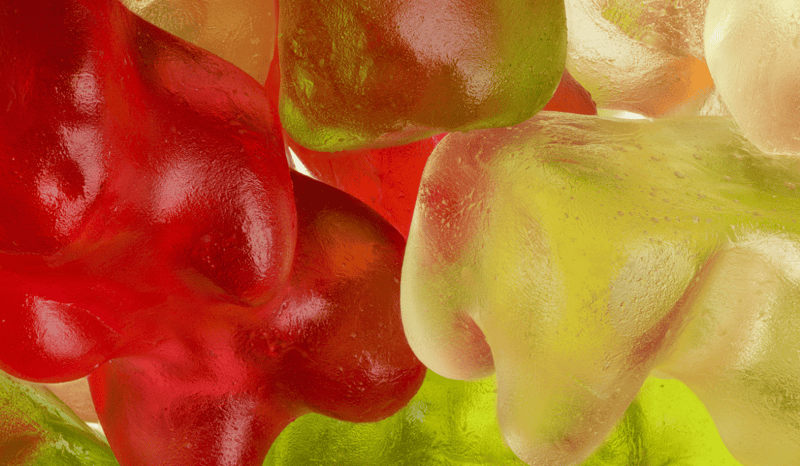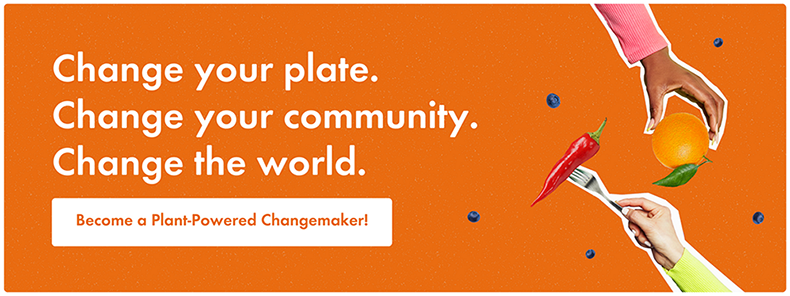
Once you learn what gelatin is, it may just change how you view your favorite snacks forever.
From marshmallows to gummy bears, many of us have grown up enjoying colorful, chewy treats, never stopping to think about what makes them that way. Spoiler alert: it’s not magic. It’s gelatin. Once you learn what gelatin is made of, it may just change how you view your favorite snacks forever.
So, What Is Gelatin Made Of?
Gelatin is made by boiling the skin, tendons, ligaments, and bones of animals—most commonly cows, fish, and pigs. Yep, those gooey candies and pill capsules are often the byproduct of animal suffering.
The boiling process breaks down collagen (the protein that holds animals’ bodies together) into a jelly-like solution that’s then dried into a powder. It’s odorless and tasteless, which makes it a popular ingredient in processed foods, cosmetics, and even some medications. Let’s be clear: just because it’s hidden doesn’t mean it’s harmless.
Billions of animals are raised and slaughtered every year in factory farms, where they’re denied the ability to express natural behaviors, endure painful mutilations without anesthesia, and are often killed in brutal, high-speed slaughterhouses. Gelatin is just one of the many ways the food and pharmaceutical industries profit off this cruelty, right down to the last tendon.
Where You’ll Find Gelatin
It’s not just in marshmallows and gummy worms. Gelatin often hides in:
- Yogurts and puddings (for texture)
- Frosted cereals (yep, those sugary coatings)
- Jell-O and other gelatin desserts (of course)
- Some ice creams
- Capsules and coatings for vitamins and medications
- Certain cosmetics, like face masks and nail hardeners
Since companies in the US aren’t always required to label where the gelatin they use comes from, it can be hard to tell what you’re really consuming unless it’s explicitly marked “vegan.”
The Ethical and Environmental Cost
Besides the clear animal cruelty issues, gelatin also has a massive environmental impact. Industrial animal agriculture is one of the largest contributors to climate change, deforestation, and water pollution. So every gelatin-based treat comes at a cost far beyond your grocery bill. It’s contributing to a system that’s harming animals and our planet.
Better Choices: Gelatin Alternatives That Don’t Hurt Animals
The good news? You don’t need to support animal suffering to enjoy chewy candies or thick, creamy desserts. There are plenty of gelatin alternatives that are plant-based, just as effective, and far kinder to animals.
Here are some of our favorites:
- Agar-agar: Made from seaweed, this plant-based thickener is a great swap for gelatin in recipes. It sets even more firmly than gelatin and is perfect for desserts.
- Pectin: Found naturally in fruits, pectin is commonly used in jams and jellies and works beautifully in gummy treats.
- Carrageenan: Another seaweed-derived thickener, carrageenan is often used in dairy alternatives and puddings.
- Kudzu root starch, cornstarch, or tapioca: All are excellent for thickening sauces and desserts without harming a single animal.
You can also find vegan marshmallows, gelatin-free vitamins, and gummy candies labeled “cruelty-free” at many grocery stores and online retailers.
Change What’s on Your Plate and What’s in Your Pantry
When we choose plant-based over animal-based products, we’re not just making a healthier decision for ourselves—we’re making a powerful statement for the animals and the planet. Learning what gelatin is made of may feel uncomfortable, but it’s also the first step in creating a food system rooted in compassion and sustainability.
You have the power to stop supporting the industries profiting from animal suffering—even in the small things, like a gummy bear. Because when you know better, you can do better.
Want to learn more about making animal-friendly swaps in your everyday life? Join World Animal Protection US’s FREE online community, Plant-Powered Changemakers, for tips, recipes, and actions you can take to build a kinder world for animals one bite at a time.
